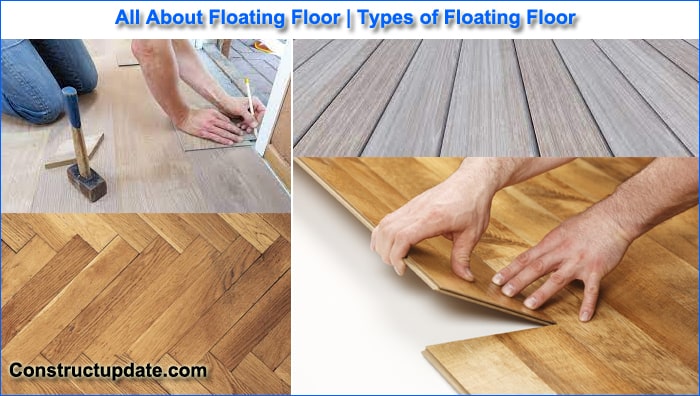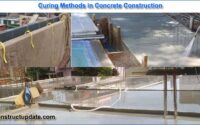Floating Floors | Types of Floating Floor | Pros and Cons | Floating Floor Cost
For a variety of floor coverings, floating flooring has grown increasingly popular. The word “floating floor” does not relate to a specific type of flooring; rather, it refers to a method of installation that can be used with laminates, engineered hardwood, and luxury vinyl flooring.
Individual planks (or, in some circumstances, tiles) are edge-to-edge interlocked to form a single mat-like surface that merely lays on the underlayment in this approach. It differs from the glue-down or nail-down procedures that are still used for ceramic and stone tiles, as well as the methods that were once typical for almost all flooring materials.

What is a floating floor?
A floating floor is one that does not require the use of nails to install. Instead of fastening wood boards together, you snap them together like puzzle pieces. As a result, rather than being firmly bonded to the substrate, the floor “floats” above it.
The floating floorboards make installation quick, easy, and cost-effective. This approach can be used on a variety of floor surfaces, including plywood, concrete, sheet vinyl, and even porcelain tiles.
A floating floor, on the other hand, can feel hollow under your feet if it isn’t put properly or the subfloor isn’t prepped ahead of time, as you might expect.
Engineered wood flooring is one of the most popular wood flooring options for floating floors. Wood veneer applied to plywood layers is extremely sturdy and appears to be solid flooring.
Types of Floating Floors
Engineered Wood
Engineered wood flooring is made up of numerous layers of wood with a solid wood finish layer on top. This design results in a lightweight, long-lasting, and easy-to-maintain wood floor. It’s a great sustainable alternative because the bottom layers are occasionally made of recycled or pressed wood. Engineered wood floors come in a floating “click-lock” style, as well as glue-down and nail-down options.
Laminate
For floating floors, laminate flooring is a common choice. Tongue-and-groove “click-lock” systems, which use simple tongue-and-groove arrangements instead of nails or adhesives, are commonly used to attach floating laminate planks. Laminate is a long-lasting alternative with wood and tile appearances.
Luxury Vinyl
There are two types of luxury vinyl flooring: luxury vinyl plank (LVP), which is designed to look like wood, and luxury vinyl tile (LVT), which is designed to look like stone or ceramics. To snap together, floating vinyl planks and tiles use tongue-and-groove or “click-lock” mechanisms, similar to floating laminate planks and floating engineered wood planks. Glue down is an alternative to floating.
Pros and Cons of Floating Floors:
Pros:
- Inexpensive
- Easy to replace damaged planks
- Easy DIY installation
Cons:
- It’s possible that the value of your home will drop.
- Underfoot, it might feel hollow and noisy.
- Refinishing is not possible.
- Floating Floor Problem
Floating floor is a fairly modern sort of floor that most people are using. However, there are some issues with floating floors, which are listed below.-
Peaking: A major concern with floating floors is peaking, which detracts from their natural appearance. Plank boards grow in this type of problem, and if there isn’t enough room for them to expand, they bump out, causing the floor to elevate somewhat. If the board does not expand, the upper side of the board will rise.
Warping and Buckling: The most common cause of warping and buckling in floating flooring is moisture. When cleaning the floor, don’t use too much water; if you use less water, the buckling and warping changes will be reduced as well. You must take special precautions to ensure that no liquid enters the space between two floating boards.
Mould: Another significant issue with floating floors is the presence of germs or fungi on the upper area of the floor. This condition only occurs when the room’s moisture or humidity levels are consistently rising or exceeding those of a normal environment.
Floorboard Gaps: This type of issue occurs when the floorboards are torn apart, resulting in various gaps. This type of issue usually occurs when there is a significant temperature differential.
Edge Chipping: This is a severe issue that degrades the aesthetic appeal by creating gaps where mould can thrive.
Floating Floor Cost:
The cost of a floating floor varies greatly, and is largely determined by the type of material used and its quality. Because floating floors are far easier and faster to install than most glue-down or nail-down flooring (carpet being an exception), professional installation of a floating floor is generally much less expensive. The average cost of flooring materials + labour in the United States is:
Laminate flooring costs between $2.70 and $10 per square foot, depending on the kind and finish.
Around $7 per square foot for luxury vinyl flooring (LVF).
Engineered hardwood is priced between $5 and $8 per square foot (average-grade product).
Maintenance and Repair
The type of floating floor material determines how it is cleaned and maintained. Cleaning laminate and luxury vinyl, for example, is usually as simple as damp-mopping, although water should be avoided when cleaning engineered hardwood.
Damaged planks or boards are often more easier to replace on floating floors than on glue-down or nail-down floors, because the floating planks may be disassembled and the damaged boards replaced.
Is a Floating Floor Right for You?
If you are a do-it-yourselfer or have a limited budget, a floating floor may be an excellent option. Compared to glue-down or nail-down flooring, these products are often less expensive and easier to install. While certain floating floors are perceived as being low-cost in terms of appearance and performance, luxury vinyl is actually a high-end material that will not depreciate the value of your home.





